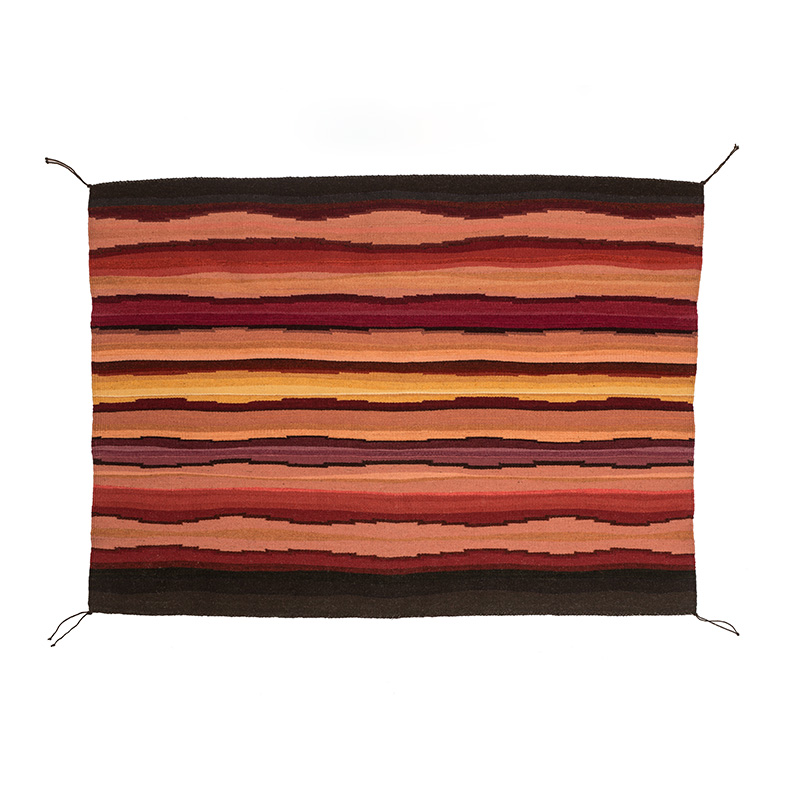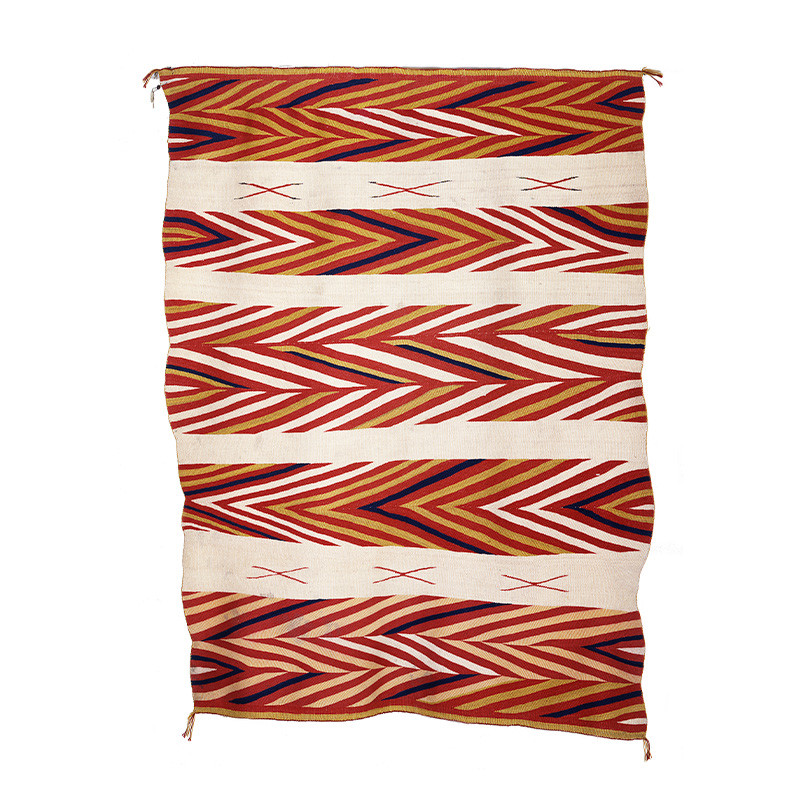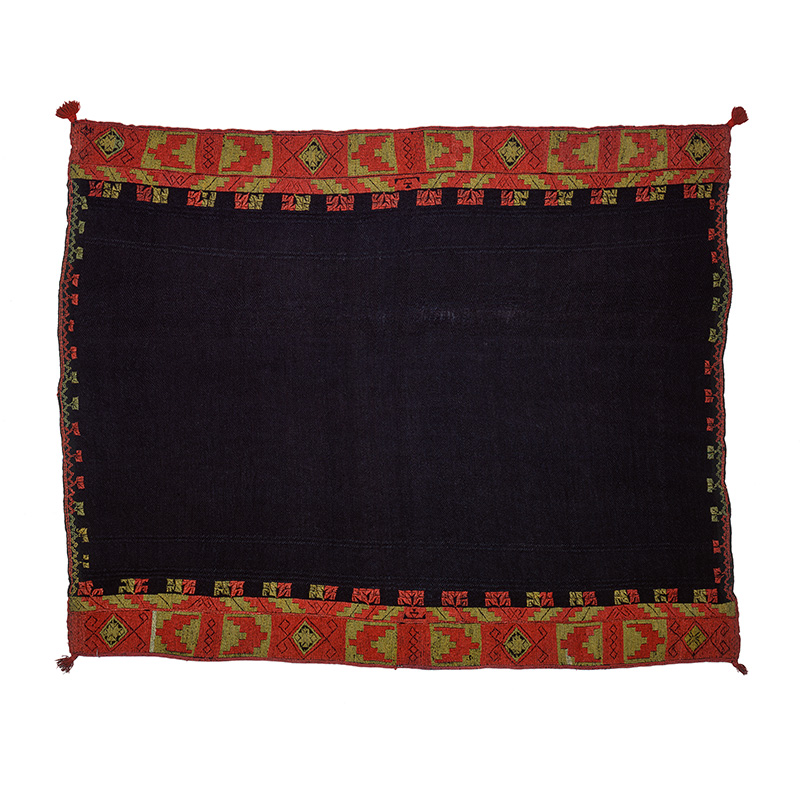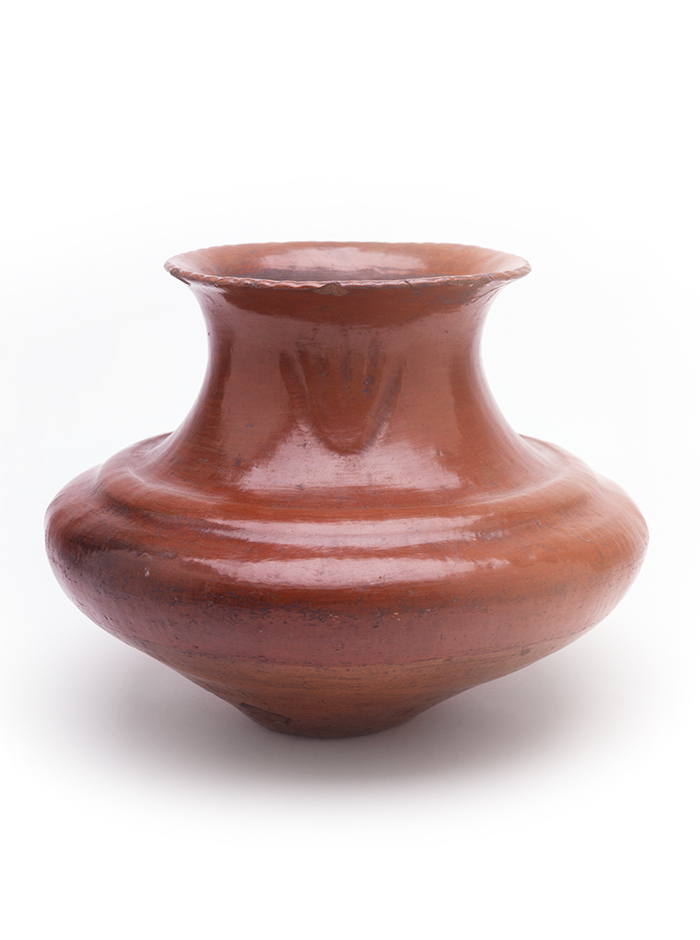The major American Indian textile traditions in the Southwest are the Diné (Navajo) and Pueblo. The museum’s collection contains historic and contemporary textiles of both traditions that span several centuries.
Diné weavers have actively woven a wide variety of textiles for trade and sale. Along with rare shoulder blankets and sarapes with bold designs from the 19th century, the museum’s collection also contains excellent examples of the changes in weaving styles that span the 20th century and into the 21st century. This includes the mid-century decades of regionally based designs. Names of some of the regional styles include Two Grey Hills, Ganado, Crystal, Chinle, Teec Nos Pos, Wide Ruins and Burntwater. While these regional styles are still woven, Diné weavers continue to develop innovative, individual designs that display novel color combinations. Several major collections of these contemporary Diné textiles have been donated to the museum’s collection.
Pueblo textiles include embroidered kilts, robes and sashes associated with ceremony, and thus their designs have changed very little over time. The museum’s collection of Pueblo textiles includes excellent examples of historical Pueblo weaving, particularly Hopi textiles collected by the Fred Harvey Company. Contemporary Puebloan textiles continue to be woven and embroidered and are represented in the museum’s collection. Hopi weaver and textile designer Ramona Sakiestewa has donated original textiles, along with her archives, to the museum.














